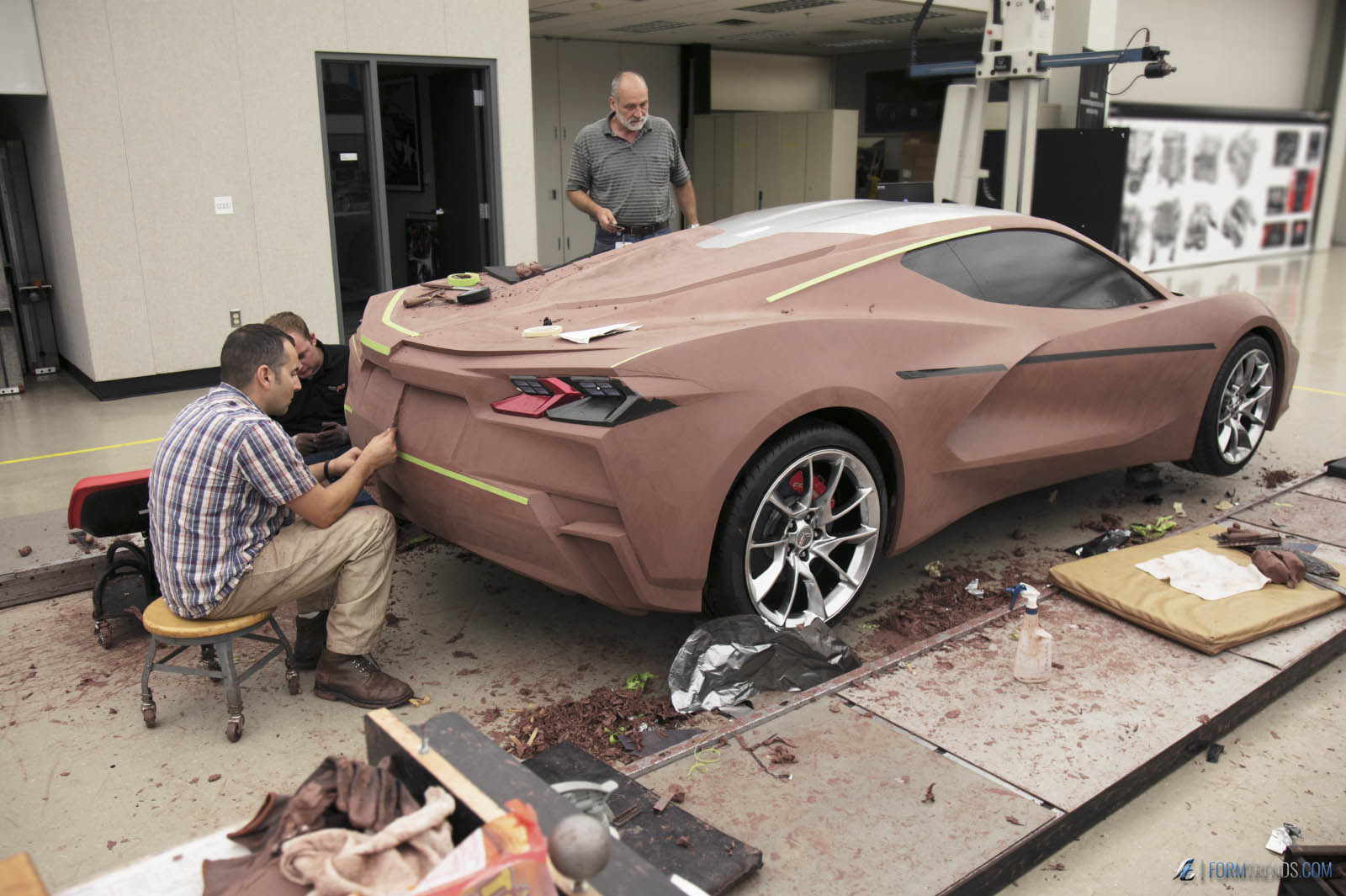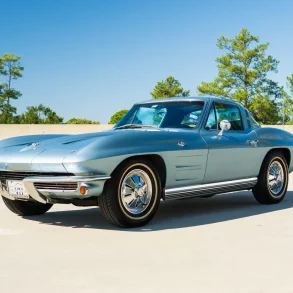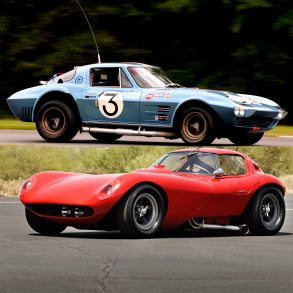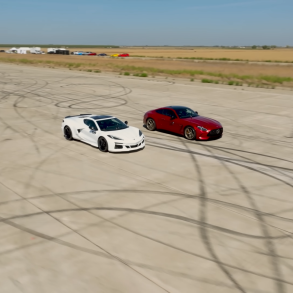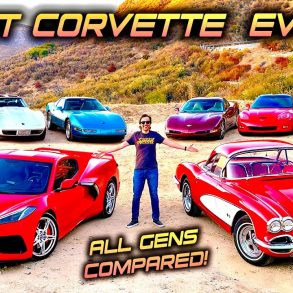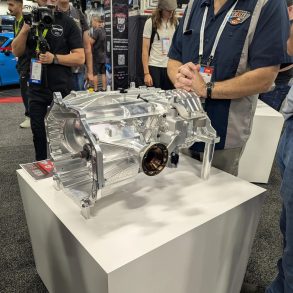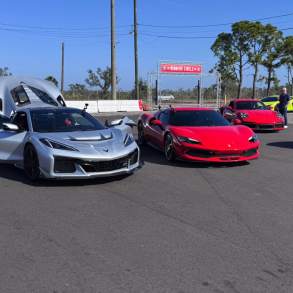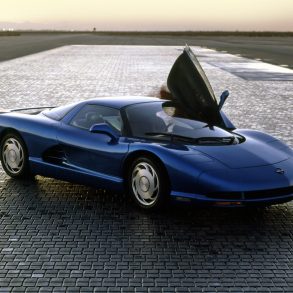The Corvette has worn many shapes over the years, from the C1 looking like a drop top coupe of the time to the C3 looking like a bat out of hell that wanted to go just as fast. There was the redesign in the 1990s that gave rise to the C5 generation, a totally fresh look at the front engine, rear drive sports car. We all love and appreciate these designs, but have you ever stopped to wonder where those shapes and curves come from?
In the beginning, it really was a few designers, a couple of engineers, pencil, paper, and a big easel in a corner office. Zora Arkus-Duntov used the same type of design equipment to shape his prototypes and eventually the timeless shape of the C2 generation. Nowadays, however, there is a dedicated department full of designers and engineers whose entire job it is to dream and draw, and come up with shapes and styles that resonate with customers and the big brass alike.

A Corvette these days isn’t just drawn by one man or woman, sent off, and then that person goes for a spot of lunch. No, each car is now designed down to the smallest nut and bolt that holds the engine in place, or to the exact millimeter for the axle to be able to handle the power the engine puts out. For many companies, this department is closed off, even often needing special permission to enter such as McLaren Special Operations at McLaren Automotive, and Design Centro Stile at Lamborghini. Thankfully, GM is pretty open about the surface level of their design department, so for this article, we will investigate the average lifecycle of a Corvette from the first time pencil touches paper to the final product rolling off the production line.
NOTE: We here at Corvsport want to recognize CorvetteForum.com member “E.T.D. Corvettes” for putting pictures of the 25th Anniversary of the Corvette Museum online, including the talk about the design process. We use many of his images in this article, and acknowledge his copyright and ownership of his photos.
Shapes & Angles
The very first step in designing a Corvette comes from the internal group in GM’s Design Department with the very imaginative title of “Design Studio: Concept.” Don’t let the title fool you into thinking that this is a simple job. In fact, the designers in this step of the process are often specialists, with decades of experience each, having worked their way up from an internship to being part of the concept team.
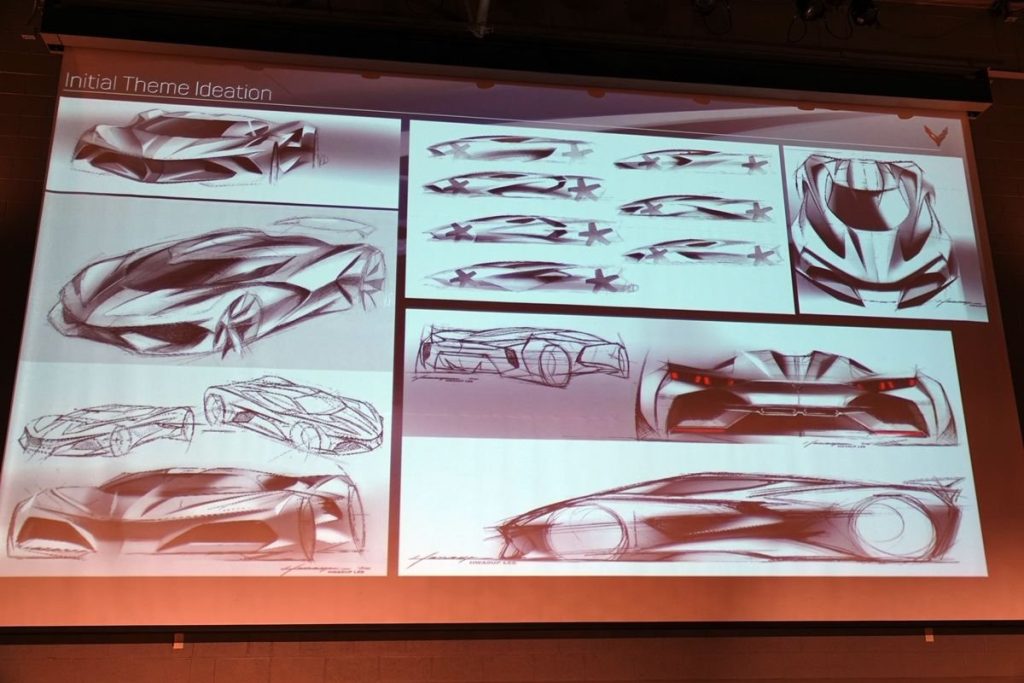
These designers are so highly valued because they have the ability to look at shapes and angles in the world, and figure out how to make them work on the car that they’ve been tasked to dream up. For example, since about 2013, modern industrial designs have started to favor sharp angles and lines that cut a clean shape in the air. To see this, look at the networking section in your local computer store or online, and look specifically at the routers. Almost every single one of them that is not a bargain basement model is all angles and lines.
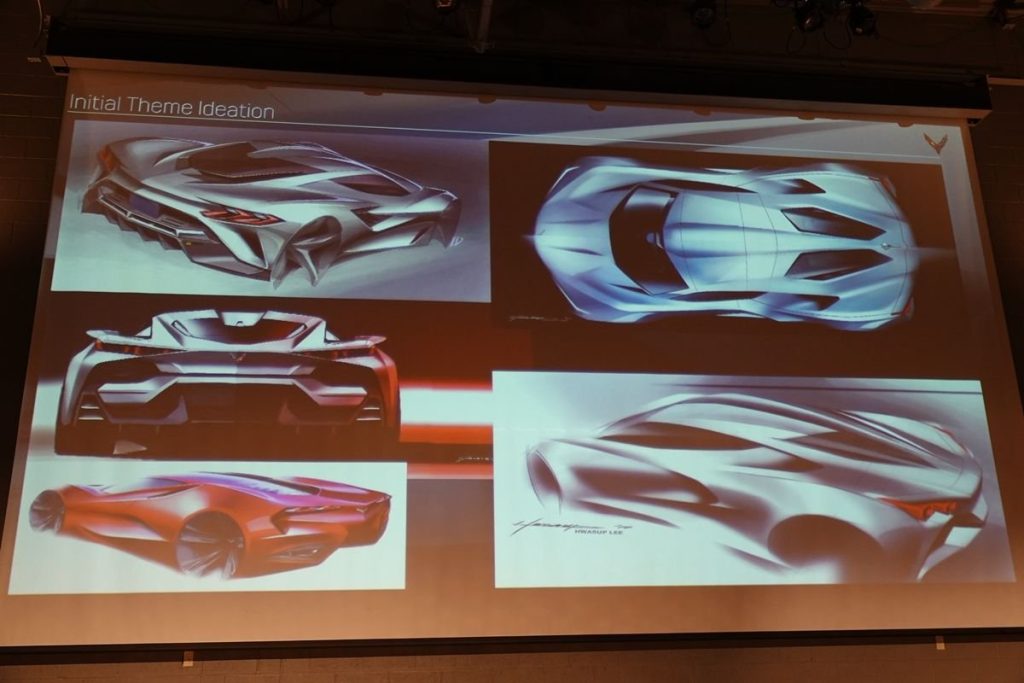
It is with this in mind that the first drawings of the C8 generation were drafted.
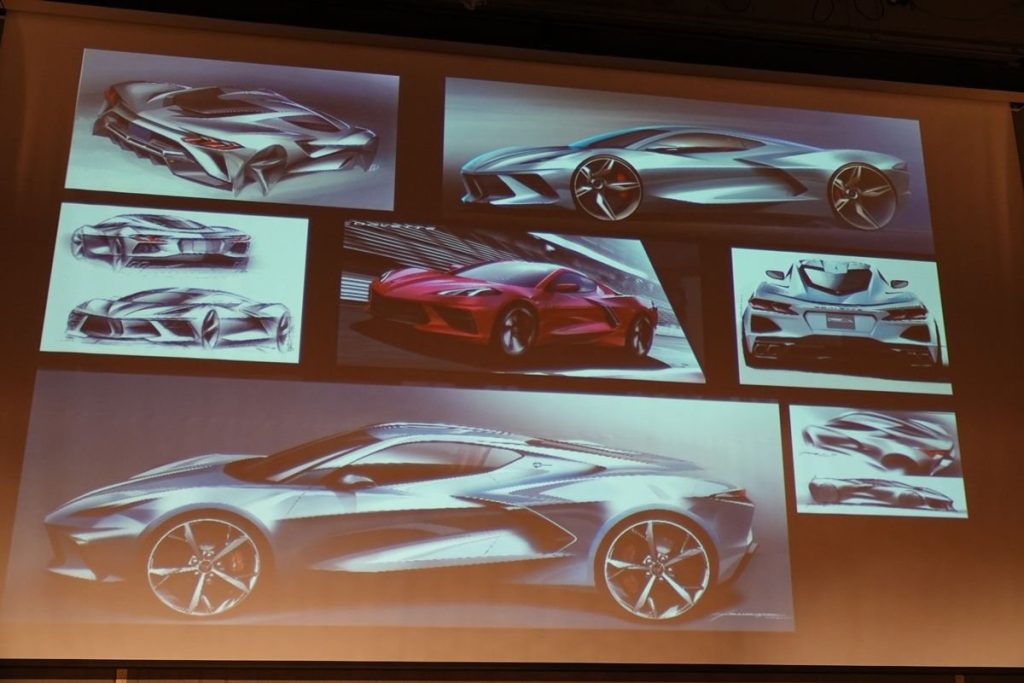
The shape that eventually became the C8 was drafted by Vlad Kapitonov, a low, sharply angular car with gigantic air scoops on the sides to feed the small block V8 squarely in the middle of the car. It had the right dimensions, the right “Feel” about it that resonated with everyone that saw it, and so as far back as 2015, the shape of the C8 was already being iterated.
CAD, CFD, & Scale Modelling
As much as a drawing on paper or, these days, a digital tablet can inspire, those concept sketches need to be worked on through several evolutions to develop into a shape that is more realistic for humans to be able to sit in and drive. This is where the “Design Studio: CAD & CFD” department comes into play.
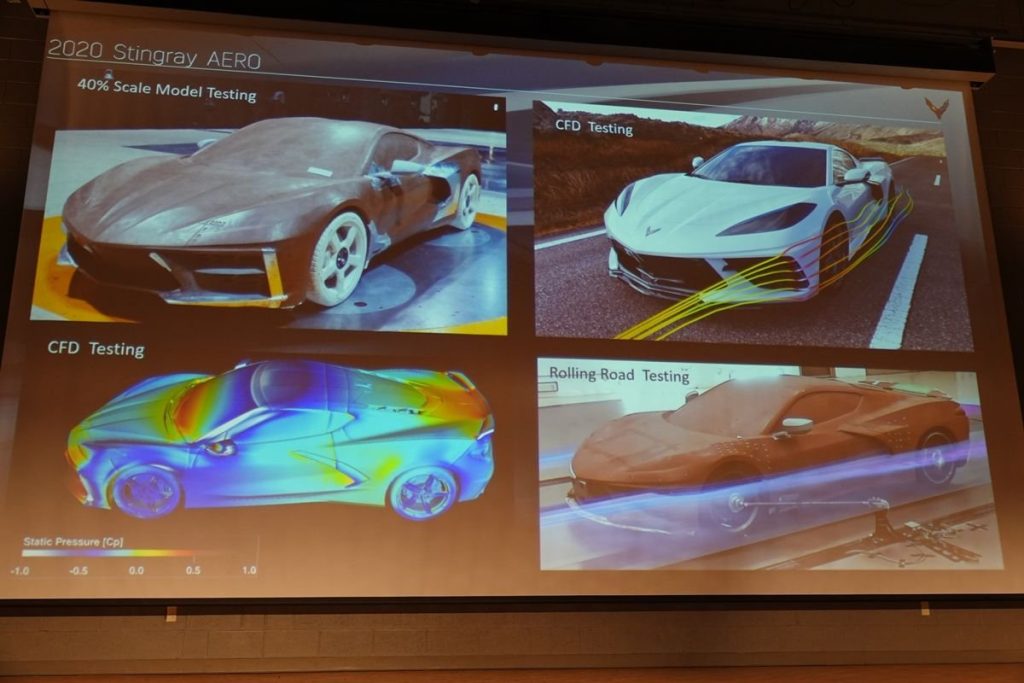
For those that do not know, those two acronyms stand for “Computer Aided Design” and “Computer Fluid Dynamics.” The first allows for the first “Real shapes” of the car to be visualized in a three dimensional image, with nanometrically accurate sizing thanks to the powerful workstation computers that the designers and engineers in this department have. Although it can take months on end to do, each evolution of the drawings to a concept shape in the computer allows for rapid global collaboration with parts suppliers or other design departments in other countries that are employed by GM to give their input.
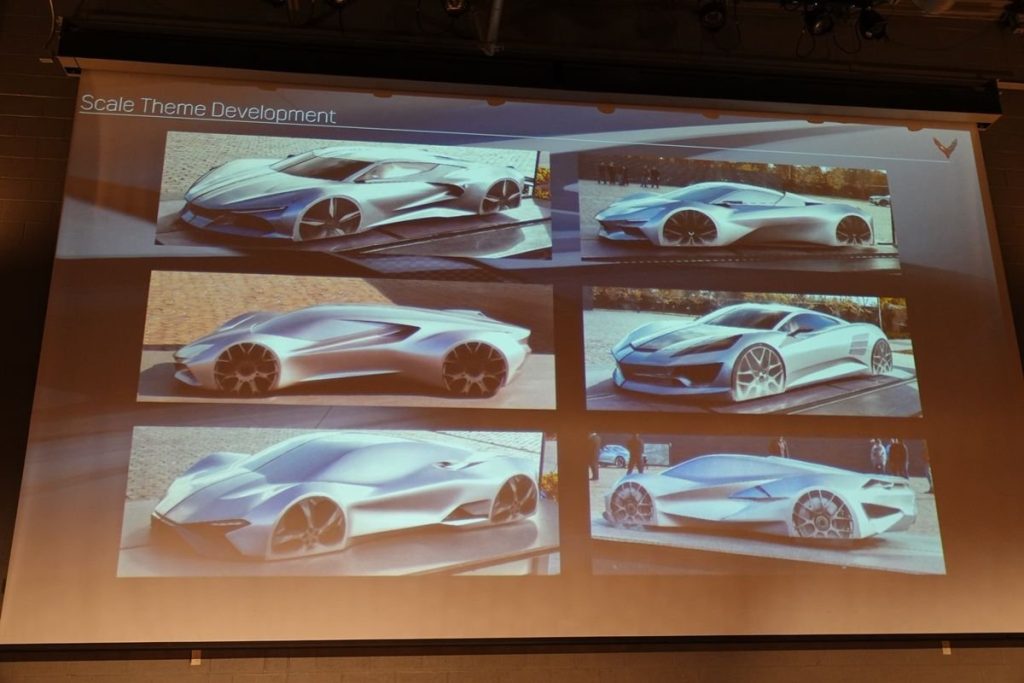
Once a shape is nailed down, which can take one or two years in time, the first thing that needs to be done before any real parts even start to take shape is to see how the car’s shape works aerodynamically. In days past, this required building a scale model and placing it in a wind tunnel. These days, that first visit to the wind tunnel takes place inside a supercomputer. Computer Fluid Dynamics simulates how air will interact with the car, including how it is deflected, how much downforce it will generate, if enough air is getting into cooling ducts and through radiators, and the like.
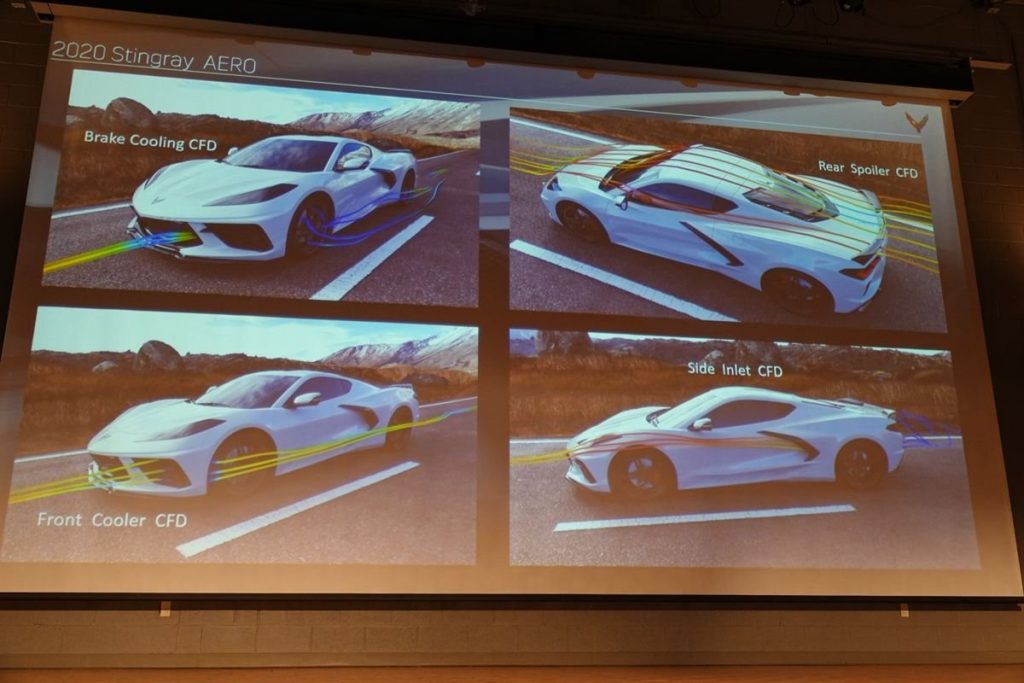
As well, as technology has advanced so rapidly, these initial shapes can be “seen” in Virtual Reality (VR). Wearing headsets, team leads and head designers can literally “walk around” the car, seeing it from every imaginable angle without a single piece of metal or carbon fiber even being close to being produced.
After the shape is tested in the computer, the next step involves using the 3D files from the CFD tests to 3D print a fiberglass scale model, which is often accompanied as well by a hand sculpted clay scale model. These are known as the “rolling road scale models,” and they go into a traditional wind tunnel to double check and verify the data that the CFD process generated. The basic thought process is “Trust but verify,” because as powerful as computers are, they aren’t real air and real interactions against real surfaces. Better to find an issue on a scale model ahead of going for the full size models and prototypes!
Engine Simulation & Dyno Testing
Taking place at the same time as the CAD & CFD work on the shape, engineers work to design the engine that will power the new car. Thankfully, GM has a huge history of V8 engines to draw from, and a lot of that information has been digitized. This allows the engineers to have real world data to work with as they make a new engine, and give them fairly accurate guesses as to output power at the flywheel.
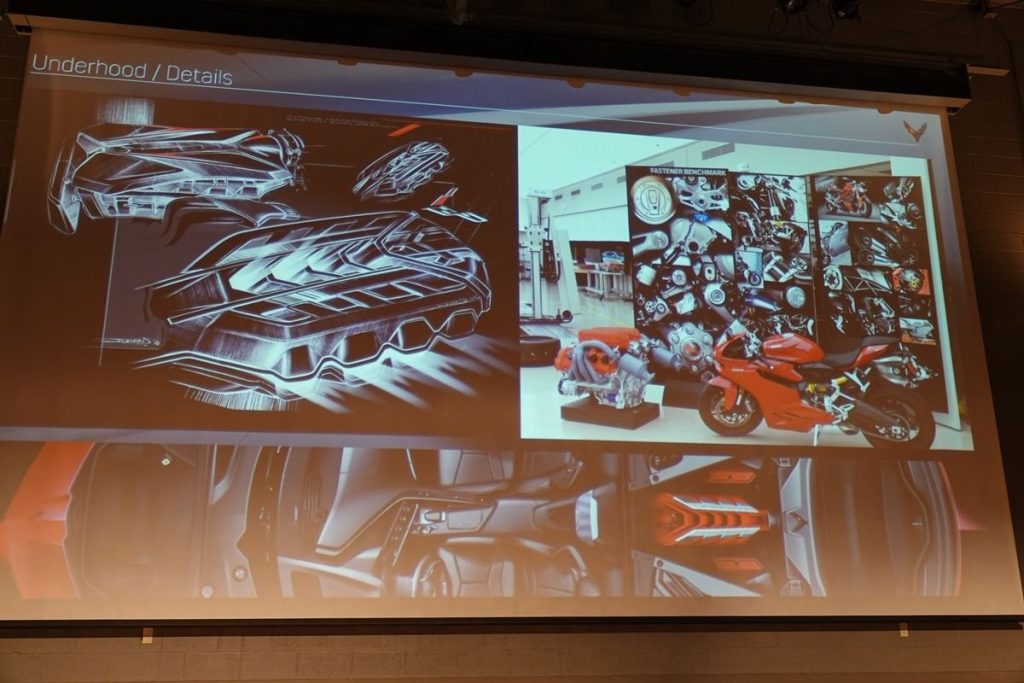
However, as the engine is the true heart of a sports car, or realistically any car, an engine prototype will be built while the car it goes in will still be in the CFD stage of development. These engines will then be placed onto dynamometers and often pushed to failure, as finding the limits of the engine itself is important in developing the redline, the engine map, injector timings, and the like. Using evolutions of the engine, from the first prototype to the fully realized and programmed V8 that will be put in the car, it is not uncommon to blow up 5 to 10 engines, which is why engine dyno rooms have peculiarly thick walls and ballistic glass windows!
Clay & Prototyping
Although it is starting to become obsolete with the rise of VR, clay modelling still takes place at GM. Specialist sculptors use a specific, high density and very resilient clay to bring the finalized shape to life. This is often one of the most important steps, as this is when the shape and design that has been worked on for years by this time gets its final approval. These artists are so precise that often part molds are made based on the clay model.
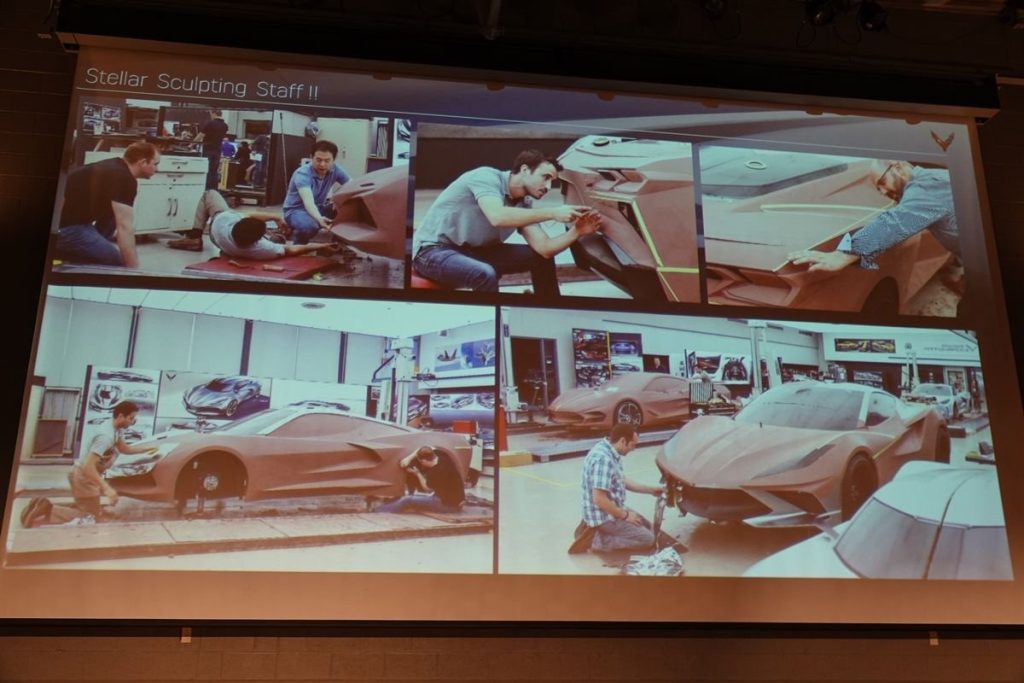
It is at this point that part molds, as mentioned, start to get made, and based on all the CAD, CFD, and clay work, the prototype vehicle starts to take shape. The assembly line process starts to be developed at this time as well, with a special production line with some of the best technicians testing out the process and making adjustments as needed, such as noting down how much torque each bolt needs for things like the doors. Once a prototype rolls off this internal production line, it often is a “non-running” concept, in that while it might have the engine mounted in the car and look ready to drive, it is the car that often visit automotive shows around the world.
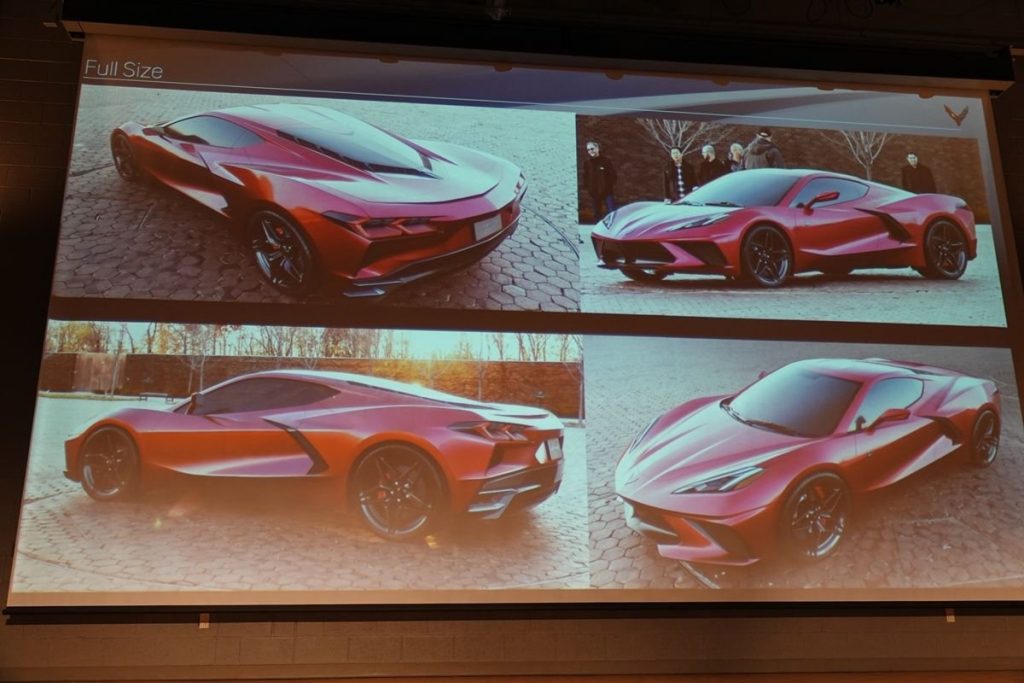
For the Corvette C8, that concept was shown for the first time at the National Corvette Museum’s 25th Anniversary Celebration on August 29, 2019, including showing the clay models that lead to the first production concept. Because of the massive amount of work done inside computers before the first running prototype emerged a few months after the reveal and started being test driven, the car was considered “80% production ready.” All that was left was to finalize a few shapes, work out the suspension geometry, tune the DCT transmission to work with the V8 and test out different driving modes, and finalize the look of the interior.
Final Prototypes & Production Ready
This stage is the culmination of sometimes nearly a decade of work by designers, engineers, specialists, test drivers, and managers. After anywhere from 3 to 10 prototypes, the final car is often called the “production ready” prototype.
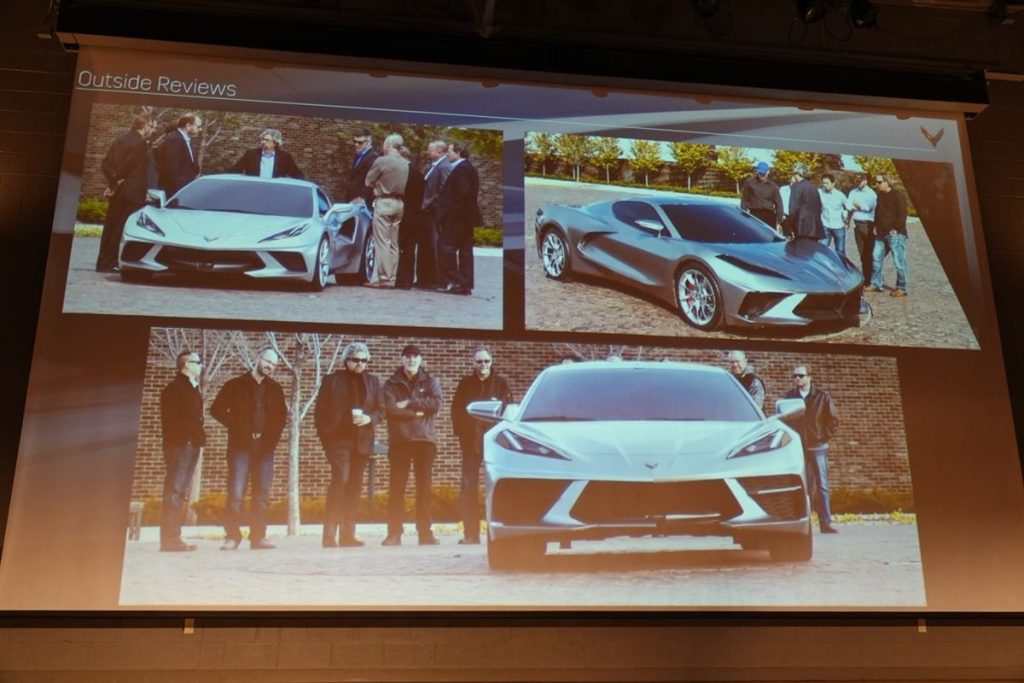
This is a prototype that was built using the finalized assembly setup and guide, with a nearly-production ECU and electronics mounted in the car for final testing. These cars are quite often the ones you see wearing camouflage as they scream around racetracks or down the freeway to get real world testing done.
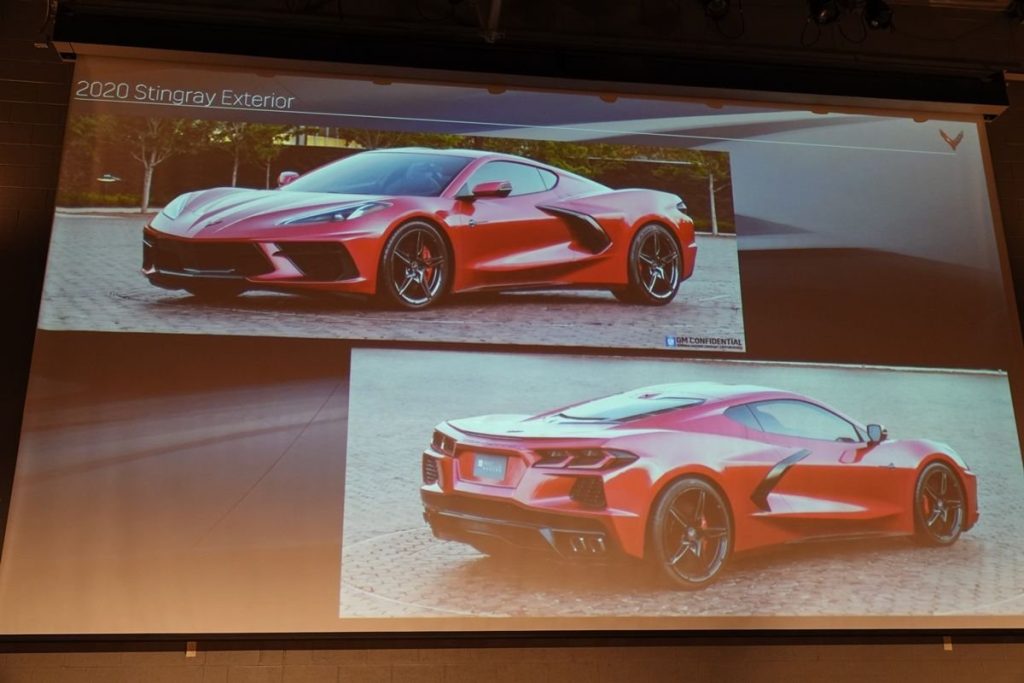
These production ready prototypes are also the ones that you will see revealed at cars shows, being driven onto the stage so that journalists can take a billion and one pictures of what the car will actually look like. Once a design reaches this stage, it often only has a few small bugs and nitpicky bits to get worked on, such as the infotainment system for the C8 having a bug that froze it if you pressed a certain sequence of buttons. So, when the C8 owners out there first placed their orders, they were buying based on the final prototype to leave the design department.
First Car Off The Line
Chevrolet loves to celebrate the first car off the production line, and as such often auctions off serial number 0001 at a prestigious event like the Barrett Jackson auction or Pebble Beach or the like. Often, these first serial number cars can get into the high six figures or low seven figures for the prestige of having the first car. These auctions will take place once the assembly line has been set up, so that once that first slot is bought and the specifications such as color and options are placed, it can start production as soon as feasible.
For example, serial number 0001 of the Corvette C8 sold for $3 million at Barrett Jackson in 2019.
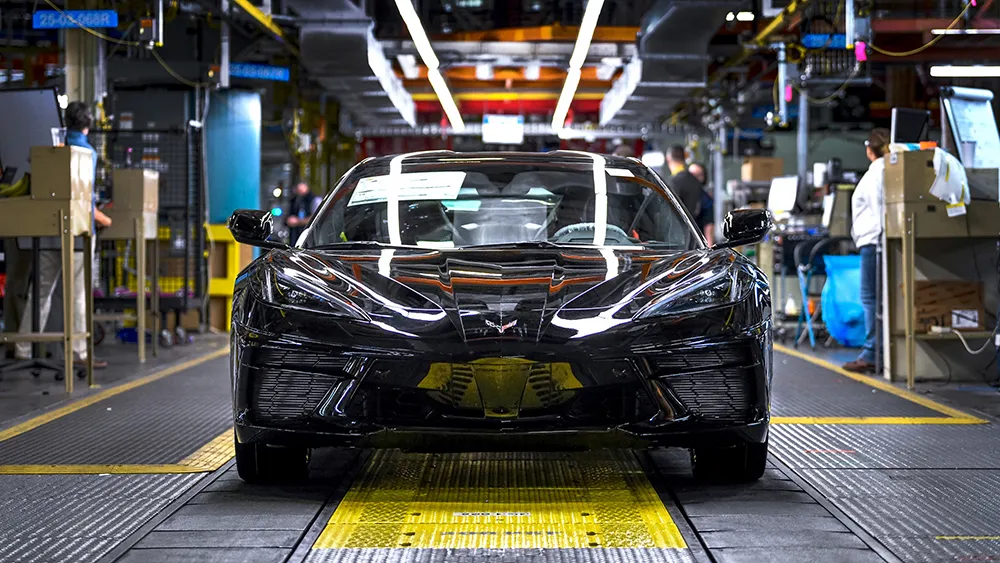
Think about it. Starting somewhere in a room full for highly experienced artists and designers in 2012, the Corvette C8 spent years being evolved into a production vehicle that looks mean, low, and fast, and handles beautifully. Thousands of people were involved in every step of the way, silently working behind the door labelled “Design & Developement” so that in 2020, the Corvette C8 was able to hit the road without any major hiccups or issues. It is often a thankless job, but hopefully this little peek behind that very door makes one appreciate just how long it takes to truly design a masterpiece.


